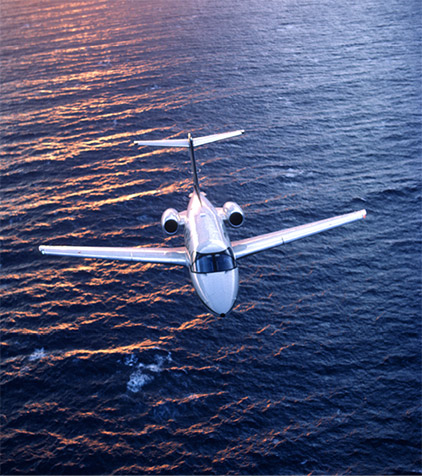Quick Look: Mitsubishi Diamond IA
Big cabin, improved hot/high performance

SPEC SHEET
Mitsubishi Diamond IA
Powerplant | (2) 2,500 lbst Pratt & Whitney JT15D-4D
Length | 48 ft 5 in
Height | 13 ft 9 in
Wingspan | 43 ft 6 in
Seats | 2+6/8
Max takeoff weight | 15,500 lb
Balanced Field Length | 3,940 ft
Max cruise speed | 430 kt
Range | 1,120 nm
Mitsubishi Heavy Industries’ MU–300 Diamond has roots dating back to 1969, when the company analyzed the same market Cessna was targeting with its Citation line. Cessna, however, got a huge lead on Mitsubishi when it came time to start pushing airframes out the door—nearly a decade, in fact. Much of the delay was meeting rigorous Part 25 certification rules the FAA had imposed. Diamonds emerged some 500 pounds heavier than target weight. Unlike Cessna, which installed a straight wing on its Citation line at the time, Mitsubishi’s Diamond used a large cabin on a swept wing to differentiate its entrant.
Similar to its MU–2 stablemate, the Diamond uses nearly full-span flaps to lower approach speeds while utilizing spoilers for roll control. This allowed the Diamond to keep approach reference speeds within a reasonable range, while the swept wing allowed the Diamond to best the Citation II’s high- speed cruise by about 50 knots at a nominal fuel penalty of 13 gallons per hour.
Pilots loved that the Diamond was fast and easy to fly, while passengers raved about the large cabin with a trenchless floor. Comfort is enhanced by a 9.0 psi cabin differential, providing sub-6,000-foot cabin altitudes at typical Diamond cruise altitudes in the mid to upper 30s. It’s certified to FL410.
But the original Diamond I had issues when operating in hot-and-high conditions. It was bad enough that Mitsubishi introduced a performance improvement package that more easily allowed the airplane to meet Part 25 takeoff requirements. Pratt & Whitney tweaked temperature and fan speed limits, vastly improving the situation. Further, bleeds-off takeoffs could be utilized to get more performance out of the MU–300. The tweaked model was dubbed Diamond IA and previous Diamonds could be retrofitted.
Despite vastly improved takeoff and climb performance, the Diamond IA is not a stellar performer on the runway compared to today’s jets. You’ll want to get intimate with the manual to determine real-world runway requirements before making a purchase. If you’re based at a runway shorter than 5,000 feet, this likely isn’t the airplane for you. Of course, further performance improvements came later with the acquisition by Beechcraft, which created follow-on designs—the Beechjet 400, 400A, and Hawker 400.
Performance-wise, the Diamond IA is good for 420 knots at FL350 to FL370 on about 1,200 pounds per hour. There’s enough fuel for three hours at high-speed cruise or about four hours at long-range cruise.
Up front, there are Collins Pro Line avionics. Like the Cessna Citation II, the Diamond is considered an easy airplane to fly. Thrust reversers are an option. Vref values range from $225,000 for a 1982 model to $300,000 for a 1985 model.
Pete Bedell is a pilot for a major airline and co-owner of a Cessna 172 and Beechcraft Baron D55.
Photography by Paul Bowen


